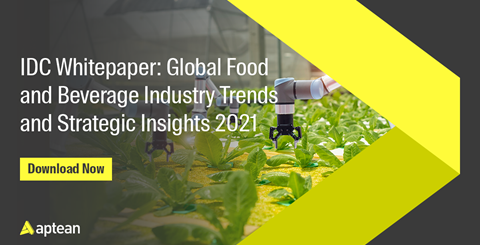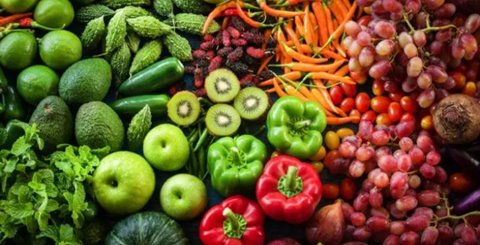Impact of Climate Change on the Food Industry
The agricultural food industry is a large contributor to climate change. And so, climate change’s consequences are felt all over the world, and especially on the plate. Changes in the climate, such as extreme weather conditions, are directly influencing the supply-demand chain, with a significant impact on food production. Some areas foresee increases in temperatures, others lack of rain, and these fluctuations will alter the production of agricultural crops. The food industry will see the changes depending how rapid the climate changes will make themselves known. If change will be gradual, then the socio-political and economic climate will have time to adapt. But in some areas, even a slight change in temperature could have devastating effects on agriculture, forestry and biodiversity.
Agrifood - Crops and agriculture susceptible to temperature changes
Crops are extremely sensitive to temperature changes. As crops flower or fruit, they are subject to change, especially if they’re exposed to temperature changes. When these changes happen, a crops summer growing season could reduce significantly. Some crops, such as potatoes, soybeans, rice, corn and wheat, have optimal growing seasons and temperatures. Any changes to these environments and the production crop fails.
Crop growth - Rainfall and irrigation to influence crop growth
Water is perhaps the most limiting factor in crops growth worldwide. The right amount of water is critical for growing crops, especially fruit. Many of the world’s crops and artificially irrigated, resulting in large amount of fossil fuel. In order to irrigate one hectare of corn by fueling with water takes twice as much energy as if the same crop would be watered by rain.
Plant and animal radiation damage - Ultraviolet rays damaging to both plans and animals
CO2 gas releases have thinned down the protective ozone layer of our planet. Per average, every 1% of ozone layer reduction leads to a 2% increase in ultraviolet radiation. Both crops and animal special are highly susceptible to radiation damage. To put it in perspective, a 25% depletion in the ozone layer could reduce soy bean reduction by 20%.
Bread and bakery - Increased CO2 and decreased nutritional value
There has been an increase in CO2 in the atmosphere for 60 years now. Higher levels of carbon dioxide in the atmosphere could increase photosynthesis, the main component in plant growth, making plants larger and containing more carbohydrates. Bread and bakery products make the basis of numerous diets around the world. But while some plants benefit from high levels (grains such as soybeans and wheat) of carbon dioxide, some don’t (corn). Unfortunately, studies have shown a significant decrease in the nutritional and health values of crops or plants raised under heavy CO2 levels. Thus, the nutritional content of food is expected to drop, as CO2 levels rise, affecting our health as a population.
Agriculture – Insects, pests, weeds and crop disease on the rise
As temperature levels rise worldwide, so does the insect population, especially pests. Pests multiply and thrive in warm, moist environments, with increase their reproductive rates in Africa and United States. These insects and crop dishes will afterwards attack crops and increase crop losses. Depending on the crop, up to 25% increase in damage could be cause by pests. Weeds are another issue that can affect agriculture. As weeds and other plant pests are more resilient to climate change, they thrive and battle for moisture, they get better exposure, nutrients and light. On a bright side, insects and bugs are now more commonly used in creating alternative protein sources.
Bees – Misbalancing a natural cycle
Plants and bees have evolved together, making bees extremely important for the health of the planet. Recent climate changes are influencing the flower blooming and been pollination cycle. The various bee species are the most important pollinators of farming and wild plants. Pesticides, mites, chemicals, changes in temperature are thought to be linked with large number of honey bee colonies dying.
Crops - Changes in crop yields need to adapt to climate conditions
Changes in climate such as temperature, moisture, pests, weeds, disease and increased CO2 will reduce food production worldwide. Crop yields such as rice, wheat and maize will see a decline when reacting to the rise in global temperatures. To keep up with these changes, farmers must adapt and change their crop growth with seasonal conditions.
Fish - A warmer, more acidic ocean impacting fish population
Fish is one of the most consumed sources of protein worldwide. The ocean waters have steadily been absorbing the excess heat trapped by greenhouse gas emissions. Since temperatures are rising, the oceans are warmer today than ever before since recordkeeping began in 1880. Because of this rise in water temperature, fisheries are impacted. Warmer waters alter the timing of fish migration and reproduction, including their metabolism, which makes them absorb more mercury (as a result of fossil fuels that end up dumped in the waters). This also influences the rise of acidity of salt water (only drinkable water source).
Meat – Feeding people has become a climate consequence
Cattle farming is one of the main worldwide pollution sources on the planet, livestock production accounting for 51% of GHG emissions. Every climate report leads to the same conclusion: reducing meat intake can make a significant change on the planet. Furthermore, deforestation for the purpose of farming and agriculture has been leading to mass extinctions of biodiversity. Not only is a high meat consumption culture accelerating climate change but it’s also affecting our health. Diabetes and obesity rates are skyrocketing, while many of the worlds’ population is starving.
Sugar and sweets – Palm oil and sugar cane as climate change culprits
Consumer’s shift towards sugar alternatives is changing the sweets industry and the amount of corn syrup, palm sugar and sugar cane that’s produces. Sweets producers have to change their chains in order to cater for a more sustainable sourcing. Deforestation with the intent of cultivating more palm tree is the largest cause of decrease in biodiversity and increase in global warming. This happens as the worlds’ jungles are no longer able to store CO2, which releases into the atmosphere.
Innovation is the main fighter against climate change. From robots, to satellites, weather forecasts, from business processes to organizational aspects, innovation and access to technological advancements has the potential to bring food companies closer to a sustainable future.
 Nederlands
Nederlands English
English



